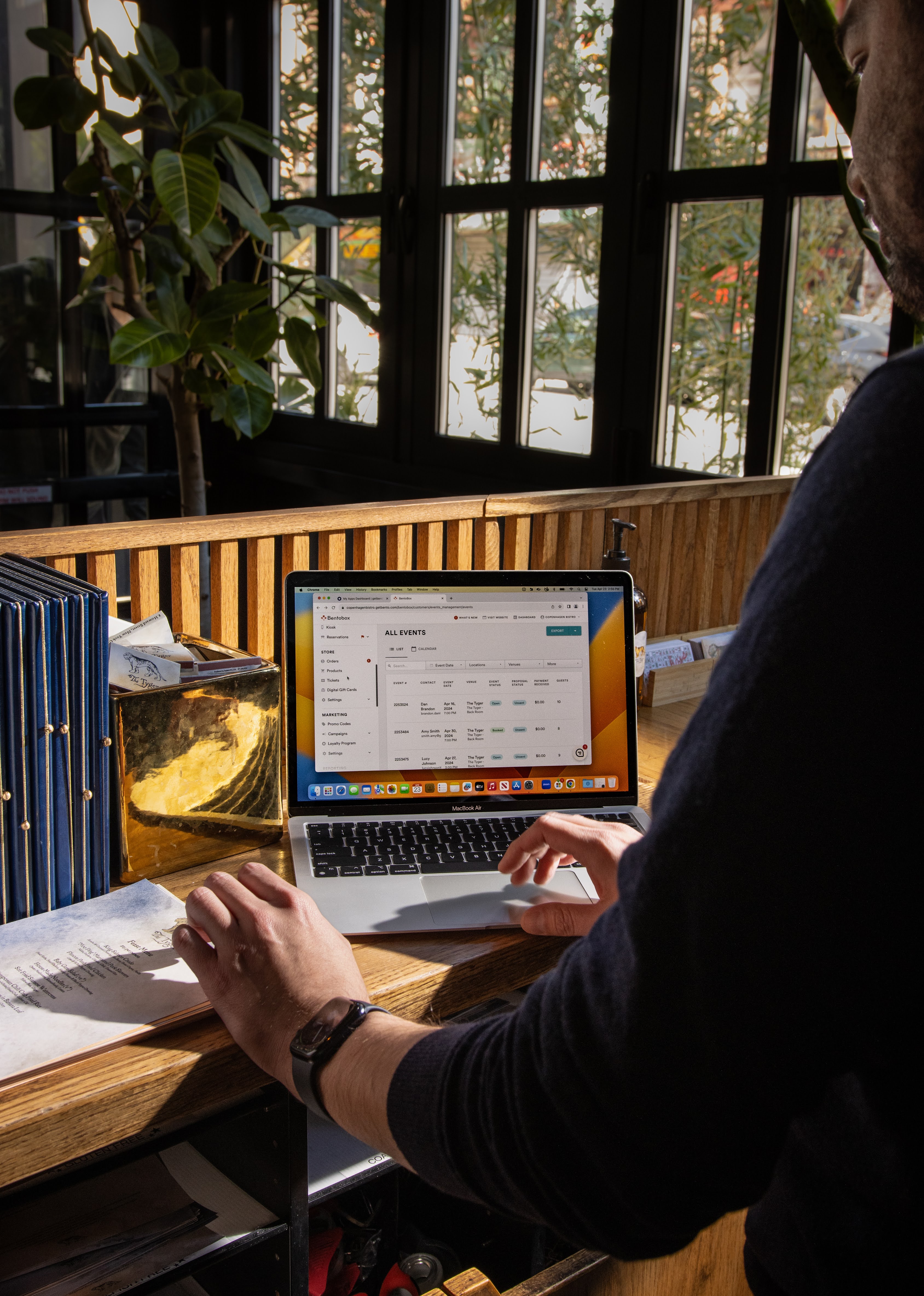COVID-19
How Restaurants Can Adapt Outdoor Dining as Cold Weather Looms
November 23, 2020
Explore options from heated patios and tents to adjusted menus and offerings.
Multiple COVID-19 trial vaccines debuted hopeful news for a nation — and in particular — an industry that’s reeling from its effects. Dining rooms are looking more and more likely to open up sooner than initially thought. Until then, three hurdles lie ahead: a surge in COVID-19 cases, colder temperatures and inclement weather.
Prior to the threat of winter and as COVID-19 cases surge worldwide, restaurant owners expected to lose $240 million this year according to the National Restaurant Association. While normally this is when guests flock to the cozy corners of their favorite restaurants, new data suggests a grim trend is emerging that paints a bad picture for the indoor dining scene.
With the rise in cases, state officials are once again shuttering indoor dining allowances. And with takeout and outdoor dining as the only means for a restaurant’s survival, they’re increasingly finding themselves in a tricky situation as cold weather begins to set in. Restaurants are therefore having to adapt their outdoor dining situation to meet the challenges that indoor dining restrictions and winter weather poses.
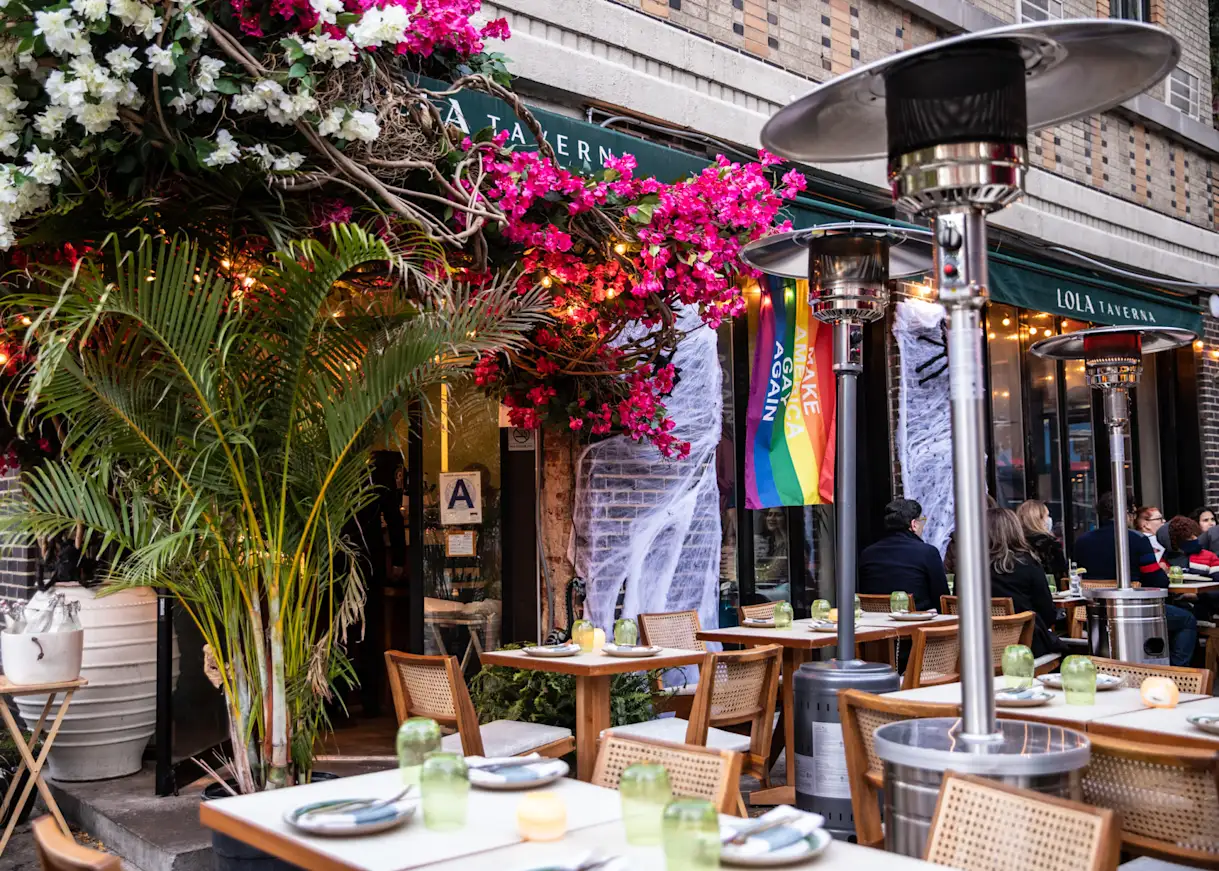
The Emergence of Sidewalk and Patio Seating
What’s become a common sight in cities and towns across the nation is the transition to outdoor seating. Prior to COVID-19, it was difficult to navigate the various permits, restrictions, guidelines and standards to offer outdoor sidewalk seating — not to mention the hefty fees it takes to obtain them.
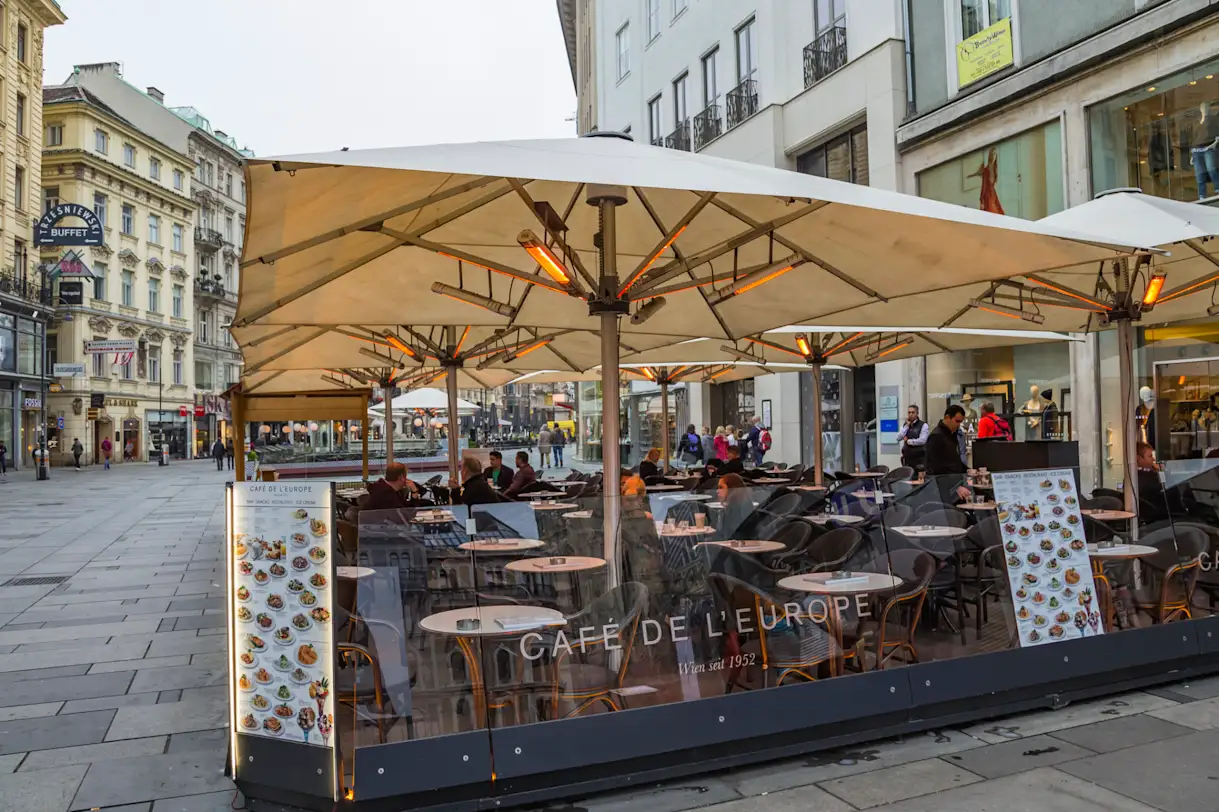
Restaurants found themselves in a difficult position. Takeout can only do so much with the expenses of an empty brick and mortar and isn’t the only solution. To ease some of the strongholds that COVID-19 had on restaurants, cities have allowed restaurants to temporarily set up sidewalk seating to accommodate on-premise dining — forgoing the permits and payments usually needed. It’s been a vital lifeline for restaurants. Many cities are allowing outdoor dining to become a permanent fixture. Even new businesses are getting in on the action — construction firms are leading the charge on aesthetically sound outdoor seating patios.
With the addition of covered patios, the safest and easiest way to provide comfort to outdoor diners this coming winter is to install space heaters throughout the dining space. For restaurant operators who aren’t familiar with the types of space heaters to use, there are several types and both come with their advantages and disadvantages.
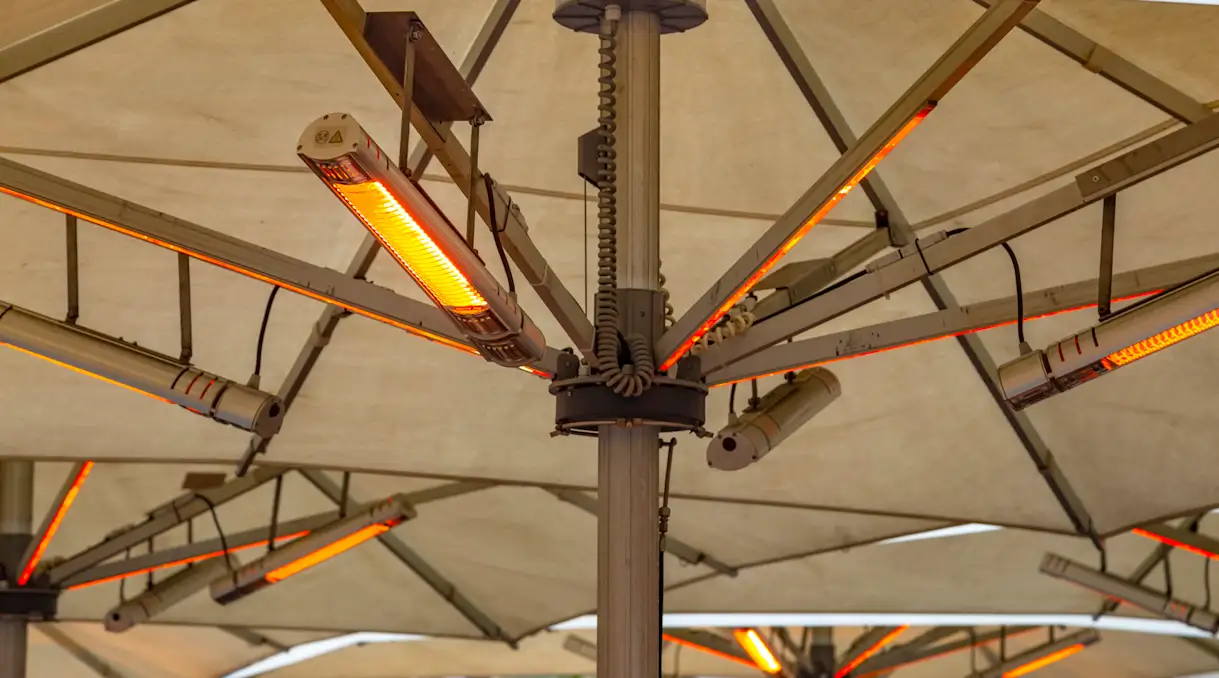
Outdoor Heaters Restaurants Should Consider
There are a few types of heaters that restaurants can adopt for outdoor dining.
Propane, Open-Flame Heaters
One huge advantage of propane-fueled heaters is that they’re portable. Operators can move the heat to where their guests are based on the confines of the outdoor environment. Another advantage is that propane-fueled units are generally the lowest entry-cost solution for outdoor heat. Upfront costs are lower than permanently installed heaters powered by natural gas or electricity.
However, a disadvantage is that they require constant maintenance and tanks need to be swapped out and refilled on a regular basis, ultimately taking time away from other matters and raising costs by employing a service to regularly provide new tanks. Lastly, portable propane heaters cast a finite area of heat, generally up to 10ft. For restaurants with a larger outdoor footprint, it would require a greater number of heaters to comfortably accommodate patrons. Another thing for restaurants to take into consideration is the weather. Wind and rain can greatly reduce the efficiency of open-flame heaters, which puts diners in an uncomfortable situation.
Infrared Heaters
For outdoor use, infrared heat is superior to heat provided by a flame. How infrared heat works is similar to how sunlight warms objects. There is a general feeling of being warm rather than just warming the air around it. Infrared heaters are more energy-efficient than open-flame heaters, requiring less maintenance and most often run on electricity — saving money in the long run.
Another glaring advantage is that infrared heaters are much safer than open-flame heaters, which is a large reason for the many permits needed and restrictions set in place by cities across the nation. Because of their physics, Infrared heaters cast a larger area of heat — ranging from 100 to 2,500 sq ft. and be operated remotely, making it easier to adjust during dining service. This article helps restaurant operators with power output needed vs. the square footage of their outdoor space. As many restaurants look to keep outdoor dining in a post-COVID-19 world another advantage to Infrared heaters is that they can be permanently installed and largely hidden from view.

PRODUCT
Events Management Software
Streamline private event bookings for you and your guests.
Making Private Dining Even More Unique
Restaurants are increasingly looking to get creative with their outdoor dining experiences by creating individuals pods for diners. Dante, a clouted restaurant and bar in New York City, teamed up with The Greens and Pier17 to create a unique pop-up restaurant. Using individual “cabins,” the restaurants bring a unique dining experience to their guests.
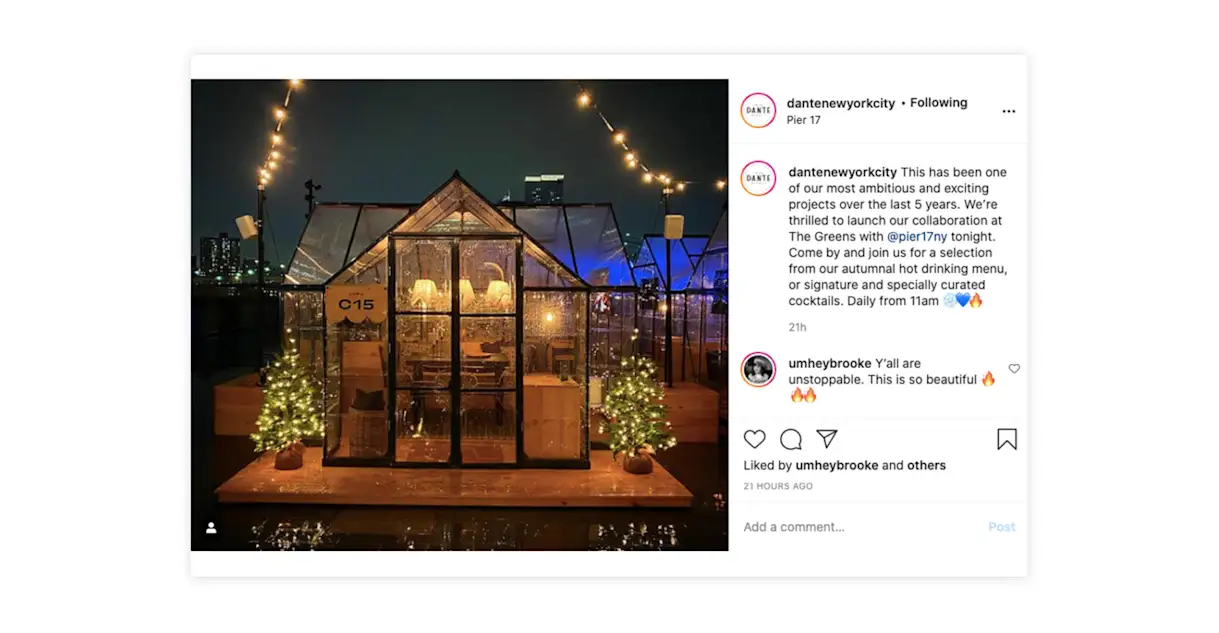
Additionally, restaurants have gravitated to placing alternative coverings — such as geodesic domes — over outdoor tables as a way of trapping heat in and keeping guests comfortable from the outside elements. It can also be seen as a new, exciting way to dine. One obvious disadvantage to some of these unique dining pods is cost. They can be relatively expensive to purchase and install. For restaurants that see this as an opportunity to drive more business — particularly in harsher climates — the benefits could outweigh the costs. Many restaurants that have implemented these types of dining experiences require reservations in advance and restrict guests to a window of time, with intervals between parties to thoroughly clean the space.
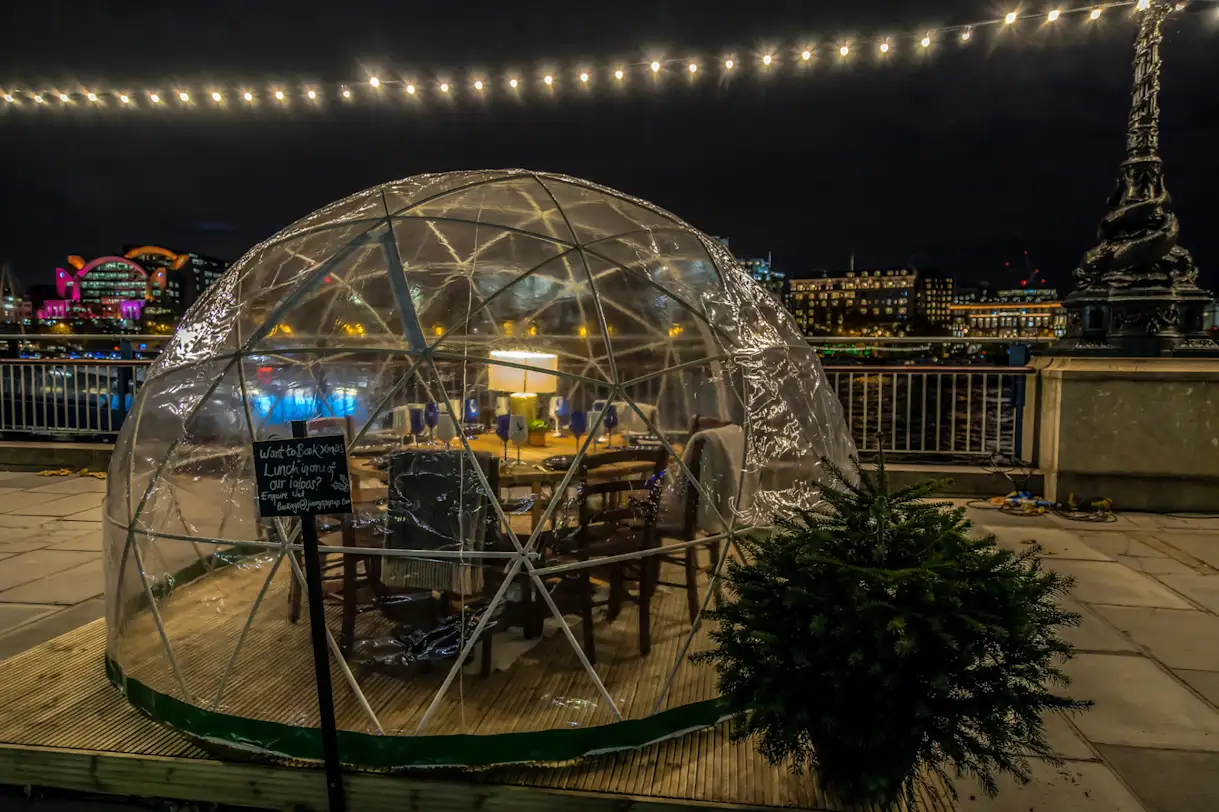
Reservation platform, Resy, along with American Express has even recently introduced, The Yurt Villages, a one-of-a-kind dining experience by teaming up with over a dozen restaurants in 13 different cities around the country. Each restaurant will feature custom-designed private dining tents or “yurts” that hold four to six guests. Frasca Food and Wine, a BentoBox partner, in Boulder, CO is a participating restaurant. To promote the special experience and to increase reservations, a pop-up alert debuts when visitors first enter the website with a call-to-action to book a reservation on the Resy platform.
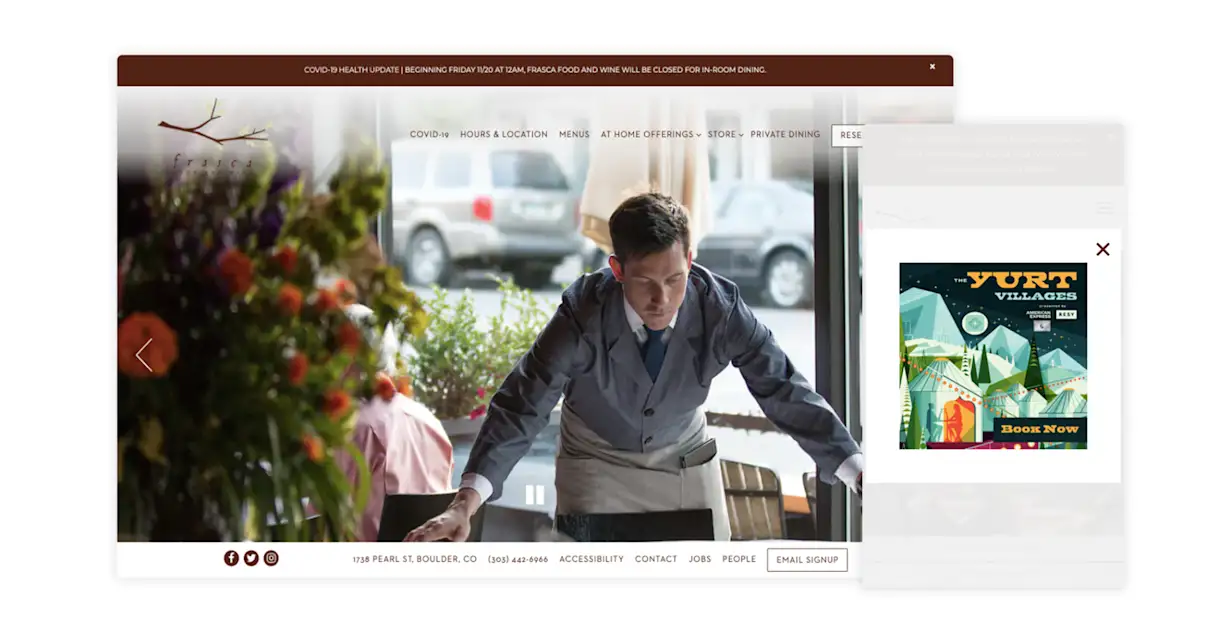
Curtained Walls, Dividers and Blankets
Restaurants are also adopting other methods of shielding their guests from the elements, while creating a cozy, warm environment. Heavy curtains made of a thick, weatherproof material — transparent or not — are great for insulating an outdoor dining area on all sides.
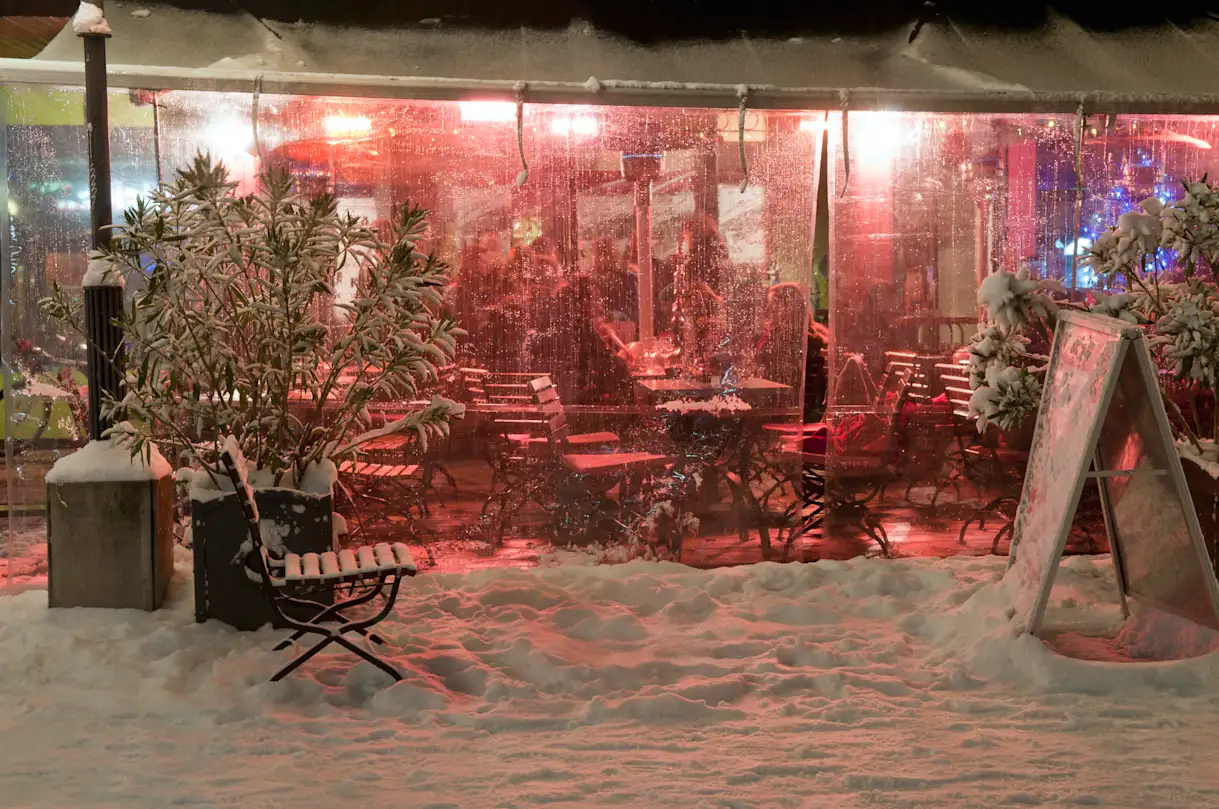
Although outdoors, restaurants will need to keep in mind that enclosing a space by curtains or tents, somewhat emulates the indoor dining experience, therefore, further protection and safety measures should be put into effect. A relatively simple way for doing so is by creating transparent dividers between tables. This extra precaution can go a long way in keeping guests safe while dining outdoors.

A familiar sight throughout cafes in Europe and other countries is the addition of blankets for guests to wear while dining outdoors. They’re normally seen folded over each chair as an additional means of comfort during brisk weather. Restaurants can provide these relatively inexpensively and even allow guests to purchase their blankets for a small fee — another way to increase alternative revenue. Keep in mind that cleanliness and safety are a top priority when implementing this. Ensure that new blankets are swapped out after each guest and washed thoroughly before recycling back into use.
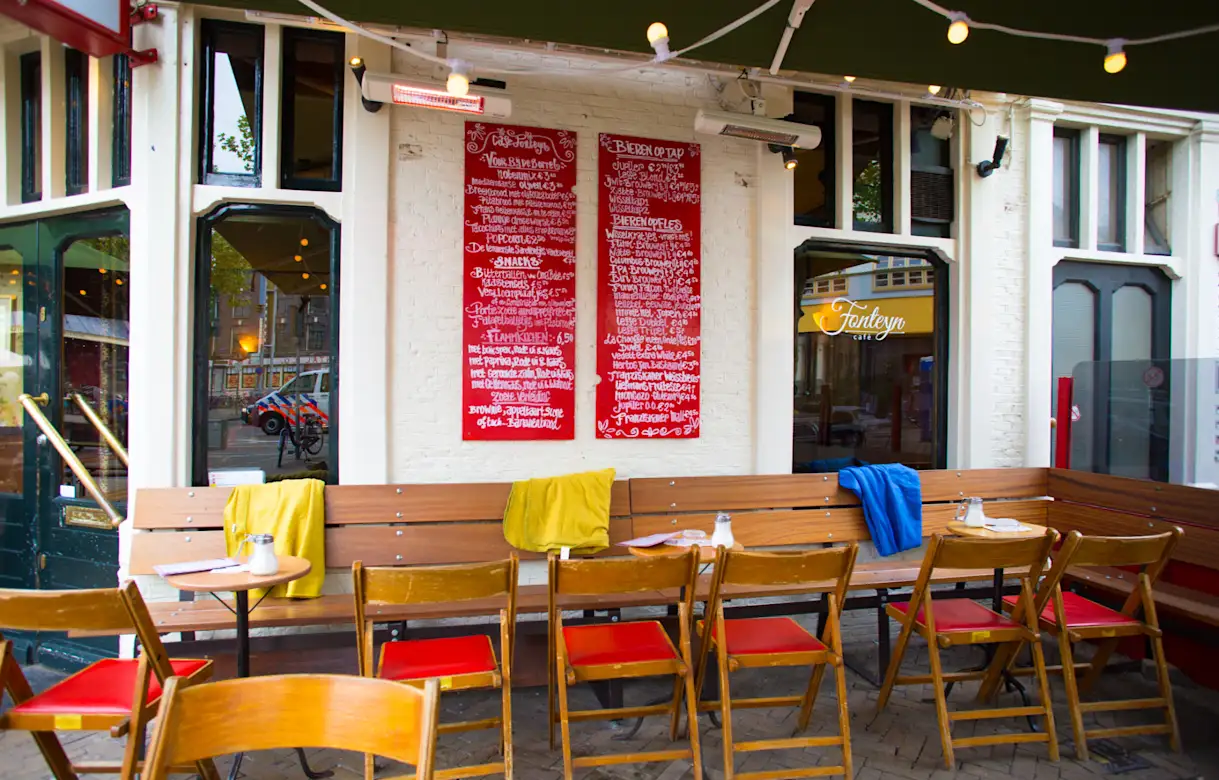
Keeping Staff Warm, Comfortable and Safe
While keeping guests as safe and comfortable as possible during their outdoor dining experiences, restaurants will also need to provide the same level of care for their staff. Front of house staff will be braving the elements constantly and therefore should be best equipped to do their job effectively. For casual restaurants that don’t require uniforms, allowing staff members to wear appropriate cold-weather items should be implemented. For restaurants that generally require uniforms, operators should provide their staff with sufficient cold-weather items that fit into their guidelines such as sweaters, coats, gloves and caps. Even consider partnering with a clothing business to provide a unique look for staff like Boston’s Envoy Hotel did for their employees. Tilit is a great example for retail chef wear & custom uniforms including hotel uniforms and restaurant uniforms.
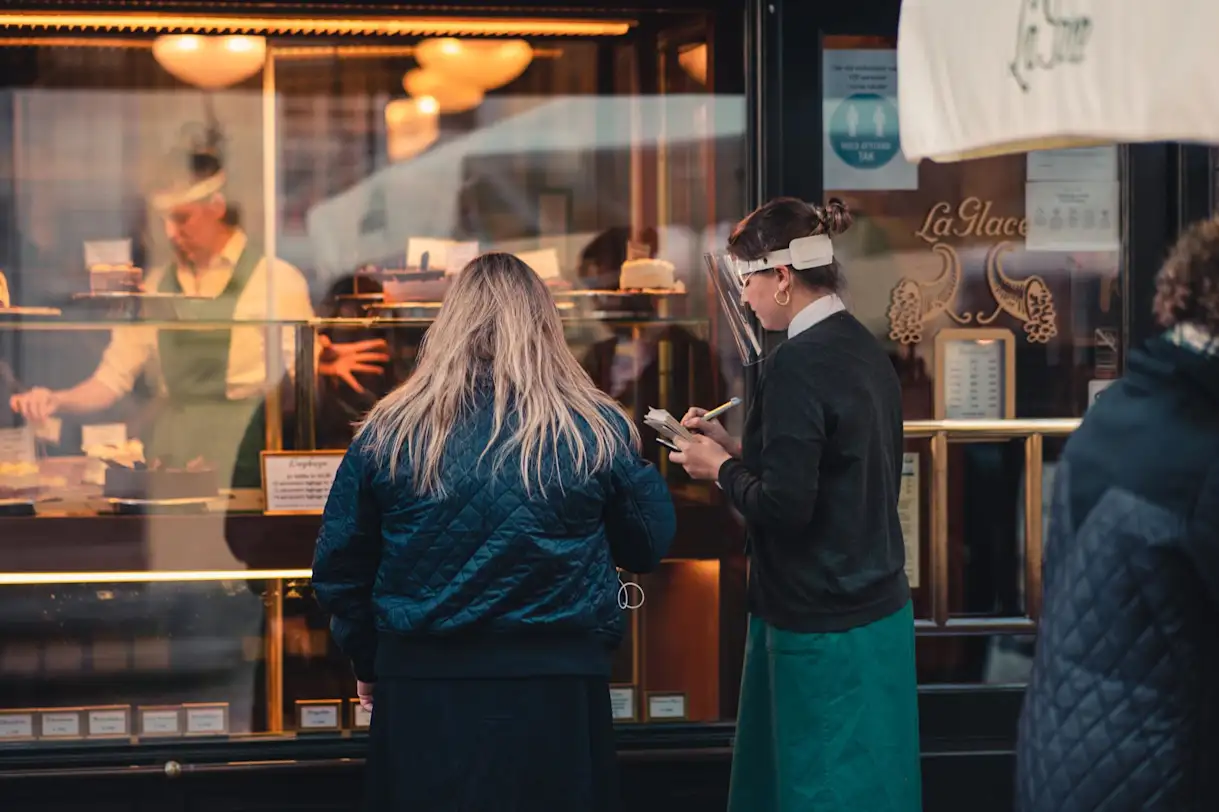
As restaurants continue to adapt to the disruptive nature of COVID-19 and unfavorable weather looming for outdoor dining, these methods are a way to provide some level of comfort that is safe and easy to execute. Although the menacing threat of winter bears down on restaurants, loyal diners are ready to support by venturing into the elements to keep their favorite restaurants around. Be sure to get in touch with a member of our team to learn of more ways restaurants are staying safe and adapting their dining experience this coming winter.

BentoBox Marketing & Commerce Platform
Deliver Smarter Hospitality
Want to stand out online, bring in more money, engage your diners, and streamline operations?
Recommended
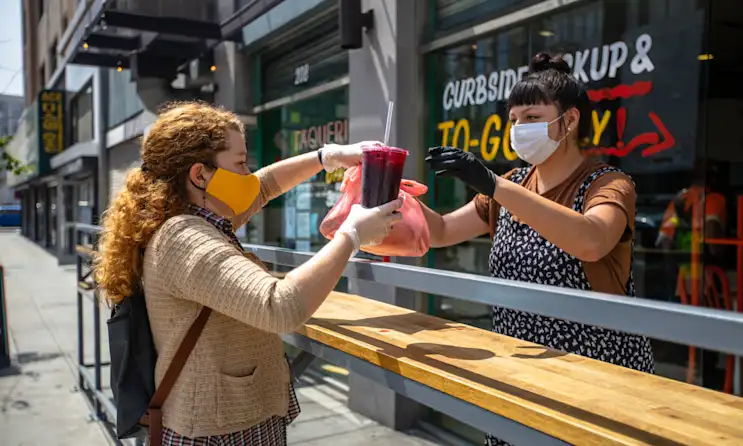
COVID-19
How To Get Started and Maximize Curbside Pickup Revenue
June 8, 2020
Tips on starting and maximizing curbside pickup revenue for your restaurant and why it’s essential for restaurants going forward.
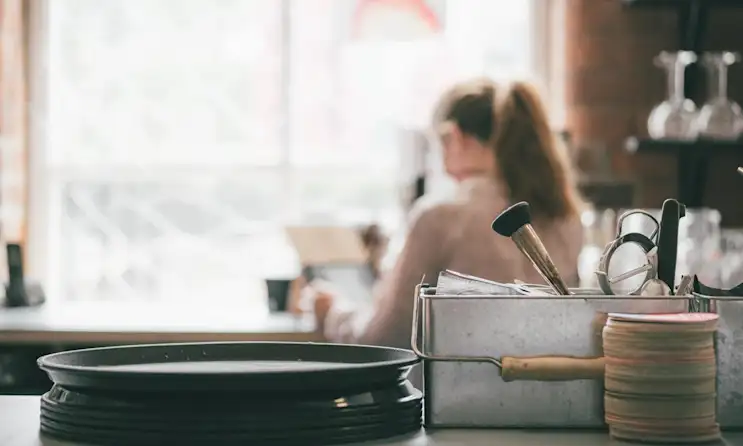
COVID-19
Restaurant Marketing Tips: How To Promote Reopening and Increase Sales
April 14, 2021
As restaurants reopen, operators will need to promote latest operations to drive business through website, email and social media
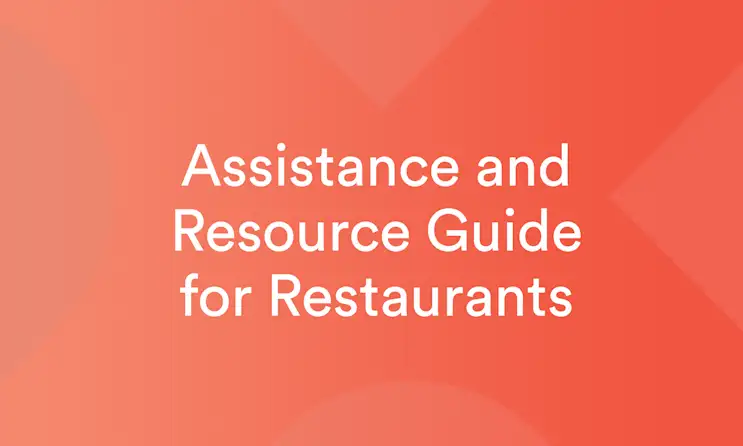
COVID-19
Assistance and Resource Guide for Restaurants
March 27, 2020
A resource guide for restaurants and bars impacted by the COVID-19/Coronavirus crisis.
